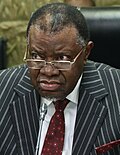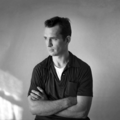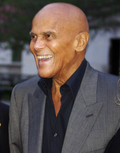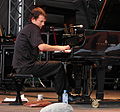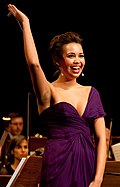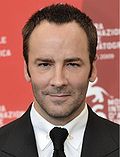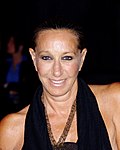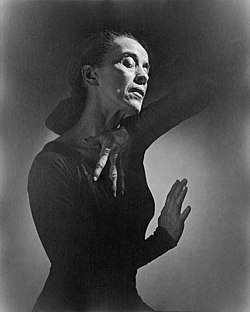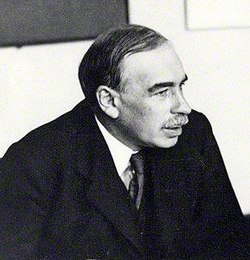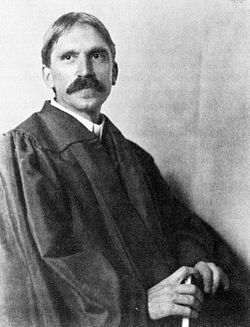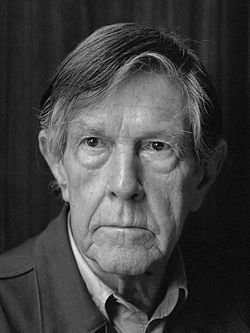The New School
 From Wikipedia - Reading time: 34 min
From Wikipedia - Reading time: 34 min
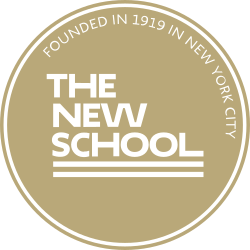 Seal | |
Former names |
|
|---|---|
| Motto | To the Living Spirit |
| Type | Private research university |
| Established | 1919 |
| Accreditation | MSCHE[1] |
| Endowment | $393.5 million (2020)[2] |
| President | Joel Towers [3] |
| Provost | Renée T. White[4] |
Academic staff | 2,230[5] |
| Students | 10,186[5] |
| Undergraduates | 6,836 |
| Postgraduates | 3,138 |
| 212[5] | |
Other students | 2,857[5] (continuing education) |
| Location | , U.S. 40°44′08.08″N 73°59′49.08″W / 40.7355778°N 73.9969667°W |
| Campus | Urban |
| Colors | White, Black, Parsons Red[6] |
Sporting affiliations | Unaffiliated, competes against NCAA Division III schools |
| Mascot | Gnarls the Narwhal |
| Website | www |
 | |
 | |
The New School is a private research university in New York City. It was founded in 1919 as The New School for Social Research with an original mission dedicated to academic freedom and intellectual inquiry and a home for progressive thinkers. Since then, the school has grown to house five divisions within the university. These include the Parsons School of Design, the Eugene Lang College of Liberal Arts, the College of Performing Arts (which includes the Mannes School of Music), The New School for Social Research, and the Schools of Public Engagement.
In addition, the university maintains the Parsons Paris campus and has also launched or housed a range of institutions, such as the international research institute World Policy Institute, the Vera List Center for Art and Politics, the India China Institute, the Observatory on Latin America, and the Center for New York City Affairs. It is classified among "R2: Doctoral Universities – High research activity".[7] Approximately 10,000 students are enrolled in undergraduate and postgraduate programs.[8] Over 70 percent of all students enrolled in university are in the creative areas of design, performing, and fine arts.
History
[edit]Name
[edit]From its founding in 1919 to 1997, the university was known as The New School for Social Research. Between 1997 and 2005 it was known as New School University. The university and each of its colleges were renamed in 2005.
The New School established the University in Exile and the École libre des hautes études in 1933. It was designed as a graduate division for largely Jewish scholars escaping from Nazi Germany and other adversarial regimes in Europe.[9] In 1934, the University in Exile was chartered by New York State and its name was changed to the Graduate Faculty of Political and Social Science. In 2005, it adopted what had initially been the name of the whole institution, the New School for Social Research, while the larger institution was renamed The New School.[10]
Founding
[edit]The New School for Social Research was founded by a group of university professors and researchers in 1919 as a school where adult students could "seek an unbiased understanding of the existing order, its genesis, growth and present working".[11] Founders included economist and literary scholar Alvin Johnson, historians Charles A. Beard and James Harvey Robinson, economist Thorstein Veblen, and philosophers Horace M. Kallen and John Dewey. Beard, Dewey, and Robinson were all faculty at Columbia University and all supporters of the Great War.
In October 1917, after Columbia University suppressed criticism of the United States by the faculty, related to World War I, it fired two professors who were critical of both Woodrow Wilson and Nicholas Murray Butler, Columbia University president. Charles A. Beard, Professor of Political Science, resigned his professorship at Columbia in protest, though he supported the war. His colleague James Harvey Robinson, who also supported the war, resigned in 1919 and both Beard and Robinson became founders of The New School. John Dewey chose to remain on the faculty of Columbia.
The New School plan was to offer the rigorousness of college education without degree matriculation or degree prerequisites. It was theoretically open to anyone, as the adult division today called Schools of Public Engagement remains in part.[11] The first classes at the New School took the form of lectures followed by discussions, for larger groups, or as smaller conferences, for "those equipped for specific research". In the first semester, 100 courses, mostly in economics and politics, were offered by an ad hoc faculty that included Thomas Sewall Adams, Charles A. Beard, Horace M. Kallen, Harold Laski, Wesley Clair Mitchell, Thorstein Veblen, James Harvey Robinson, Graham Wallas, Charles B. Davenport, Elsie Clews Parsons, and Roscoe Pound.[12] Many years later, The New School begin to offer degrees in line with the traditional university model. John Cage, who came to study at The New School in 1933 with the experimental composer Henry Cowell, taught at The New School from 1950–1960, including courses such as Experimental Composition and Mycology. Cage's teaching at the school inspired the founding of Fluxus, through his students, including Yoko Ono. [13] Cage was forced out by the Graduate Faculty who did not feel that he was appropriate to their ideal of an academic professor.
Motto
[edit]The New School uses "To the Living Spirit" as its motto. In 1937, Thomas Mann remarked that a plaque bearing the inscription "be the Living Spirit" had been torn down by the Nazis from a building at the University of Heidelberg. He suggested that the University in Exile adopt that inscription as its motto, to indicate that the 'living spirit,' mortally threatened in Europe, would have a home in this country. Alvin Johnson adopted that idea, and the motto continues to guide the division in its present-day endeavors.[14][15]
University in Exile
[edit]The Graduate Faculty of Political and Social Science was founded in 1933 as the University in Exile. It was largely for Jewish scholars purged from teaching positions due to antisemitic laws passed in 1933 Nazi Germany.[9][16] By 1938, the matter became an issue of life or death for these scholars. The University in Exile, one of a number of similar program being established nationally, was initially founded by the director of the New School, Alvin Johnson, through the financial contributions of Hiram Halle and the Rockefeller Foundation. The University in Exile and its subsequent incarnations have been the intellectual heart of the New School. Notable scholars associated with the University in Exile include psychologists Erich Fromm, Max Wertheimer and Aron Gurwitsch, political theorists Hannah Arendt and Leo Strauss, philosopher Hans Jonas, and composer Hanns Eisler.[10]
In 1934, the University in Exile was chartered by New York State and its name was changed to the Graduate Faculty of Political and Social Science. In 2005, the Graduate Faculty was again renamed, this time taking the original name of the university, The New School for Social Research.[10]
New University in Exile Consortium
[edit]In 2018, the New University in Exile Consortium was formed. The consortium is a group of multiple colleges and universities around the world which host at least one exiled scholar per year, aiding them in academic pursuits as well as providing personal support with respect to their exile.[17] Following its establishment, the consortium has helped host scholars from Afghanistan and Ukraine following the fall of the democratic Afghan government in 2021 and the Russian invasion of Ukraine in 2022.[18][19]
École libre des hautes études
[edit]The New School played a similar role with the founding of the École Libre des Hautes Études after the Nazi invasion of France. Receiving a charter from de Gaulle's Free French government in exile, the École attracted refugee scholars who taught in French, including philosopher Jacques Maritain, anthropologist Claude Lévi-Strauss, and linguist Roman Jakobson. The École Libre gradually evolved into one of the leading institutions of research in Paris, the École des Hautes Études en Sciences Sociales, with which the New School maintains close ties.
Dramatic Workshop/School of Drama
[edit]Between 1940 and 1949, The New School included the "Dramatic Workshop," a theater education program and predecessor of School of Drama founded by German emigrant theatre director Erwin Piscator. The department chairs hired by Piscator were Stella Adler (acting), Lee Strasberg (directing), and Herbert Berghoff (playwriting). Among the students of the Dramatic Workshop were Beatrice Arthur, Harry Belafonte, Marlon Brando, Tony Curtis, Ben Gazzara, Michael V. Gazzo, Rod Steiger, Elaine Stritch, Shelley Winters and Tennessee Williams.[20] Prior to the Dramatic Workshop, The Group Theater under the leadership of Harold Clurman and Lee Strasberg taught dramatic arts. Subsequent to the Dramatic Workshop, both Stella Adler and Lee Strasberg ran studios at The New School.
I attended The New School for Social Research for only a year, but what a year it was. The school and New York itself had become a sanctuary for hundreds of extraordinary European Jews who had fled Germany and other countries before and during World War II, and they were enriching the city's intellectual life with an intensity that has probably never been equaled anywhere during a comparable period of time.
— Marlon Brando, actor[16]
Presidents
[edit]These twelve individuals have served as president of The New School:
- Alvin Saunders Johnson (1922–1945)
- Bryn J. Hovde (1945–1950) [21][22][23]
- Hans Simons (1950–1960) [24] Clara Mayer served as acting president (1951)
- Abbott Kaplan (1960)[25]
- Henry David (1961–1963) [26][27] followed by Robert Morrison MacIver (acting 1963–1964)[28]
- John R. Everett (1964–1982)
- Jonathan Fanton (1982–1999)
- Bob Kerrey (2001–2010)
- David E. Van Zandt (2011–2020)
- Dwight A. McBride (2020–2023)
- Donna Shalala (2023–2024) - Interim President
- Joel Towers (2024–)
Organization
[edit]The New School is divided into autonomous colleges called "divisions". Each one is led by a dean and has its own scholarships, standards of admission, and acceptance rates.
Major colleges
[edit]| College | Founded | Schools or Divisions |
|---|---|---|
| The New School for Social Research | 1919 | |
| College of Performing Arts | 1916 | |
| Eugene Lang College of Liberal Arts | 1978 | |
| Parsons School of Design | 1896 |
|
| Schools of Public Engagement | 1919 |
|
Former divisions
[edit]| Division | Founded | Present school |
|---|---|---|
| The New School for General Studies | 1919–2011 | Now part of The New School for Public Engagement |
| Milano School of International Affairs, Management, and Urban Policy | 1964–2011 | |
| Otis Art Institute of Parsons School of Design | 1978–1991 | |
| The Actors Studio Drama School | 1994–2005 | |
| Mannes School of Music | 1916– | Now part of College of Performing Arts |
| School of Jazz and Contemporary Music | 1987– | |
| School of Drama | 2005– |
Academics
[edit]| Academic rankings | |
|---|---|
| National | |
| Forbes[29] | 261 |
| U.S. News & World Report[30] | 133 |
| Washington Monthly[31] | 298 |
| WSJ/College Pulse[32] | 310 |
| Global | |
| QS[33] | 561–570 |
| THE[34] | 801–1000 |
| Clinical Psychology | 138 |
| Fine Arts | 15 |
| Political Science | 81 |
| Psychology | 167 |
| Public Affairs | 83 |
| Urban Policy | 22 |
| Sociology | 54 |
Similar to many liberal arts colleges, The New School's Lang College has a "student-directed curriculum," which does not require its undergraduates to take general education courses. Instead, students are encouraged to explore before focusing on a major, selecting topics that are of interest to them. An exception to this is in the performing arts, where students must declare majors at enrollment. Although all "New Schoolers" are required to complete core training—usually of a literary, conservatory, or artistic nature—students are expected to be the primary designers of their own curriculum.
The university offers 81 degree/diploma programs and majors.[36] The New School faculty teach most of their classes seminar style and the student/faculty ratio is 10:1.[37][38]
Undergraduate admissions
[edit]In 2024, The New School accepted 62.5% of undergraduate applicants, with admission standards considered difficult, applicant competition considered low, and with those enrolled predicted to have an average 3.59 high school GPA based on a large sample of college GPA data since the university has not published its high school GPA data for incoming freshman. The university does not consider standardized test scores, the university having a test blind policy. Those enrolled students that had taken standardized tests had an average 1250 SAT score (34% having scores) or an average 28 ACT score (16% having scores).[39]
Dual degree programs
[edit]The university offers a range of dual degree programs. These include a Bachelor of Arts and Bachelor of Fine Arts (colloquially called the "BA/FA pathway") program or a Bachelor of Arts and master's program. The former is a comprehensive five-year program that allows students to obtain their B.A. from Eugene Lang College and their B.F.A. from either Parsons or School of Jazz and Contemporary Music. The latter is also a five-year program that allows students at Eugene Lang to obtain their masters from the New School for Social Research. The university also offers a Master of Arts Management and Entrepreneurship program, which can be obtained along with either a Bachelor of Music (Mannes) or a Bachelor of Fine Arts (drama or jazz) in five-years.
Institutes and research centers
[edit]Various institutes and research centers at The New School focus on specific fields of study:
- International affairs and global perspectives
- Philosophy and intellectual culture
- Humanities Action Lab
- Politics, policy, and society
- Art, design, and theory
- Environment
- Urban and community development
- Center for Attachment Research
- Center for New York City Affairs
- Center for Public Scholarship
The New School's College of Performing Arts is home to the experimental music venue, The Stone, offering 240 concerts a year.[40]
Enrollment demographics
[edit]Thirty-three percent of New School students come from outside of the United States,[41] with 112 non-US countries represented at the university. U.S. students come from all 50 states and the District of Columbia. Forty-three percent of them are people of color, and 5% of American students identify as more than one race.[36] Of the entire student population, 63% receive financial aid, and 17% study abroad before graduating.
Campus
[edit]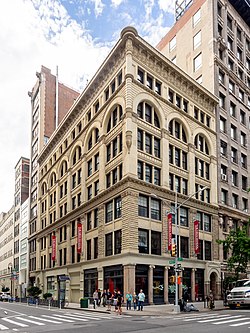


The New School's campus is centered on the area immediately south of Union Square in New York's Greenwich Village. Exceptions are some dormitories and other administrative buildings that are located in Chelsea, Stuyvesant Park, and the College of Performing Arts in the West Village.
| Building name | Address | Division / Purpose |
|---|---|---|
| 20th Street Residence | 300 west 29th Street | Dormitory |
| 39 W 13th St | 39 W 13th St | Various |
| Administrative Offices | 80 Fifth Avenue 71 Fifth Avenue |
Administration |
| Albert and Vera List Academic Center | 6 East 16th Street | New School for Social Research |
| Alvin Johnson/J. M. Kaplan Hall | 66 West 12th Street | Schools of Public Engagement Offices of President and Provost |
| Arnhold Hall | 55 West 13th Street | College of Performing Arts |
| Eugene Lang College | 65 West 11th Street | Eugene Lang College |
| Eugene Lang College Annex | 64 West 11th Street | Eugene Lang College |
| Fanton Hall | 72 Fifth Avenue | Welcome center, Registrar |
| Loeb Hall | 135 East 12th Street | Dormitory |
| Parsons East | 25 East 13th Street | Parsons School of Design |
| School of Drama | 151 Bank Street | College of Performing Arts |
| Sheila C. Johnson Design Center | 66-68 Fifth Avenue 2 West 13th Street |
Parsons School of Design |
| Stuyvesant Park | 318 East 15th Street | Dormitory |
| University Center | 63 Fifth Avenue | All divisions |
University Center
[edit]The New School opened the 16-story University Center ("UC") at 65 5th Avenue in January 2014.[42][43]
While the 65 Fifth Avenue plans were initially controversial among students and Village residents (spurring in 2009 a major student occupation that was held at The New School's previous building on that site), plans for the University Center were adjusted in response to community concerns. In a review of the University Center's final design, The New York Times architecture critic Nicolai Ouroussoff called the building "a celebration of the cosmopolitan city".
The UC serves as a central hub for all university students, though the majority of classrooms and studios are in use by Parsons. The tower, which was designed by Skidmore, Owings and Merrill's Roger Duffy, is the largest capital project the university has undertaken. The building added classrooms, new residences, computer labs, event facilities, and a cafeteria to the downtown New York City campus in addition to a library, and lecture hall.[44][45]
Historical significance
[edit]Several of the university buildings are New York City designated landmarks. Among these is the egg-shaped Tishman Auditorium, an interior landmark.[46][47] It was designed by architect Joseph Urban, along with the entirety of The New School's 66 West 12th Street building, the last major project Urban designed.[47][48] Writer's forums, author visits, political debates, award ceremonies, academic lectures, performances, and public hearings are held for both the academic community and general public throughout the year in Tishman.[48]
Newer buildings have received awards. Among these is The Sheila Johnson Design Center, which attracted media attention for its design. In 2009, it won the Society for College and University Planning's Excellence in Architecture Renovation/Adaptive Reuse Award.[49] In addition to being a Parsons core academic building, the center also serves as a public art gallery.[50] The New School Welcome Center, located on 13th Street and Fifth Avenue, won the American Institute of Architects, New York Chapter's Interiors Merit Award in 2010.[51] In October 2019, the university celebrated its centennial with The Festival of New. [52]
Libraries
[edit]The New School currently maintains three library locations and its Archives & Special Collections in New York City[53] and is a member of the Research Library Association of South Manhattan.[54] In 2009, its libraries counted a total of 1,906,046 holdings.[55][56]
- Fogelman Social Sciences and Humanities Library (migrated to the List Center)
- Kellen Archives – design and Parsons' history (migrated to Archives & Special Collections)
- Visual Resource Center (no longer active)
- Adam and Sophie Gimbel Design Library (migrated to University Center Library in 2013)
- Alexis Gregory Library for the Performing Arts
- Archives & Special Collections
- University Center Library – art, design, and technology
- List Center Library – humanities and social sciences
Art collection
[edit]In 1931 the New School commissioned two mural cycles: José Clemente Orozco's "A Call for Revolution" and "Universal Brotherhood"[57] and Thomas Hart Benton's epic America Today.[citation needed] The New School Art Collection[58] was established in 1960 with a grant from the Albert A. List Foundation. The collection, now grown to approximately 1,800 postwar and contemporary works of art, includes examples in almost all media. Parts of it are exhibited throughout the campus. Notable artists such as Andy Warhol, Kara Walker, Richard Serra, and Sol LeWitt all have pieces displayed in New School's academic buildings.[59]
Publications
[edit]Academic journals
[edit]The New School publishes the following journals:
- Constellations
- Social Research
- The Graduate Faculty Philosophy Journal
- International Journal of Politics, Culture, and Society
- New School Economic Review
- New School Psychology Bulletin
- The Journal of Design Strategies
- The Parsons Journal for Information Mapping (PJIM), a quarterly publication by the Parsons Institute for Information Mapping
Other university publications
[edit]- re:D, the magazine for Parsons alumni and the wider Parsons community, published by the New School Alumni Association.
- The New School Free Press, abbreviated as NSFP, is a student-run newspaper covering events around The New School. Periodic printed editions are distributed in newsstands across campus, while their website publishes continuously updated content.[60]
- LIT, a nationally distributed literary journal – contains works selected by the MFA Creative Writing Program
- 12th Street, a nationally distributed literary journal from The New School's Riggio Honor Program that contains work from undergraduate writers at the university
- Eleven and a Half, the literary journal of Eugene Lang College
- NEW_S, an e-newsroom showcasing The New School in major media, major student and alumni achievements, university programs, and other news
- Canon Magazine, a quarterly publication of student writings published by The New School for Social Research
- Public Seminar is a journal dedicated to the intellectual and cultural understanding of democracy through the lens of design, the social sciences, performing arts, and humanities.[61] Public Seminar is produced by New School faculty, students, and staff, and supported by colleagues and collaborators around the world.[61]
- Scapes, the annual journal of the School of Constructed Environments
- BIAS: Journal of Dress Practice, a journal published by the MA Fashion Studies Dress Practice Collective started in the spring of 2013 that aims to join elements of "visual culture, fashion theory, design studies and personal practice through a variety of media".
Broadcasting
[edit]- WNSR, or New School Radio, is a student-run online-only news and opinion outlet for all divisions of The New School.[62] Programming is produced by graduate and undergraduate students and delivered in the form of episodic streaming and podcasts.[62] It was established in 2010.[63]
- NSCR, or New School CoPa Radio, is an online radio station run by the College of Performing Arts (CoPa) and spans a wide range of genres, and features more than 400 artists, 500 albums, and 3,840 individual tracks and songs, all by students, faculty, alumni, and staff from CoPa divisions, including the School of Drama, School of Jazz and Contemporary Music, the Mannes School of Music, as well as alumni from the wider New School community.[64] The station was established in 2021.[64]
- New Histories is a faculty-run podcast show at The New School that focuses on the university's history.[65]
- Unbound is a student-run podcast show at The New School that focuses on philosophy.[66]
Student life
[edit]Student organizations
[edit]The New School houses over 50 recognized student organizations, most of which are geared towards artistic endeavors or civic engagement.[67] Notable among these are The Theatre Collective, which stages numerous dramatic productions throughout the year, Narwhals on Broadway, Students for a Democratic Society (SDS), the New School Debate Team (intercollegiate competition in Policy/Cross Examination style debate), ReNew School (sustainability and environmental advocacy group), Moxie (feminist alliance), the New Urban Grilling Society (NUGS), and The Radical Student Union (RSU).
Athletics and recreation
[edit]On October 25, 2012, a school-wide election was held to select a mascot, where The New School Narwhals were born. On January 25, 2013, the athletics logo was launched, designed by Parsons’ student Matthew Wolff (Graphic Design '14).[68]
The department began in December 2008 under its original name Recreation and Intramural sports. The McBurney YMCA is where intramurals continue to be held on Wednesday nights.
The Narwhals feature several intercollegiate teams: basketball (2009), cross country (2010), cycling (2013), soccer (2013), tennis (2014), ultimate Frisbee (2014). The New School Narwhals are an independent school, unaffiliated with the NCAA, but regularly compete against NCAA Division III schools.
Basketball – competes regularly against Cooper Union, Culinary Institute of America, Pratt Institute, and Vaughn College
Cross Country – competes in CUNYAC and HVIAC conference invitationals as an unaffiliated school
Cycling – a member of the Eastern Collegiate Cycling Conference
Soccer – competes against Cooper Union, Culinary Institute of America, St. Joseph's College, and Vaughn College
In addition to sports, the recreation department offers a myriad of free fitness classes to its community including boxing, dance, HIIT, Pilates, tai chi, yoga, and Zumba. Personal training is also offered at a rate ranging from $16.50 to $40 per session.
Outdoor Adventure trips are offered several times/week and what started to be wilderness in nature (camping, hiking, rafting) has expanded to include excursions such as archery, biking, horseback riding, skiing/snowboarding, surfing, rock climbing and trapeze.
Yee has increased programming to include a second charitable race that takes place annually in April called the 5K Rabbit Run. She has also started the Urban Hunt (a scavenger hunt around campus and the Village) and Club New (a dance party for first-year students the weekend before first day of classes).
Activist culture and social change
[edit]The New School has been associated with left-leaning politics, campus activism, civic engagement, and social change.[69] It is a "Periclean University" (a member of Project Pericles), meaning that it teaches "education for social responsibility and participatory citizenship as an essential part of their educational programs, in the classroom, on the campus, and in the community".[70] The New School is one of nine American universities to be inducted into Ashoka's "Changemaker" consortium for social entrepreneurship.[71]
In 2010, NYC Service[72] awarded New School special recognition in The College Challenge, a volunteer initiative, for the "widest array of [civic] service events both on and off campus".[73] Miriam Weinstein also cites the Eugene Lang division in her book, Making a Difference Colleges: Distinctive Colleges to Make a Better World.[74]
In 2024 during the Gaza war, students participated in pro-Palestinian occupations which called for the divestment from defense companies, an academic boycott of Israeli institutions, amnesty for all students and staff sanctioned by the university for violations of codes of conduct, and an end to the university's collaboration with the NYPD. People were arrested, but Donna E. Shalala, the interim president of New School, stated that criminal charges would not be pursued against the student protesters who were arrested.[75]
Kerrey presidency and opposition
[edit]Former U.S. Senator Bob Kerrey became president of The New School in 2000. Kerrey drew praise and criticism for his streamlining of the university, as well as censure for his support of the 2003 invasion of Iraq, generally opposed by the university's faculty.[76]
In 2004, Kerrey appointed Arjun Appadurai as provost. Appadurai resigned as provost in early 2006, but retained a tenured faculty position. He was succeeded by Joseph W. Westphal. On December 8, 2008, Kerrey announced that Westphal was stepping down to accept a position in President Barack Obama's Department of Defense transition team. Kerrey then appointed himself to the provost position while remaining president. This decision was strongly criticised by faculty and other members of the university community as a power-grab involving potential conflicts of interest. This was seen as a threat to scholarly integrity since the role of provost in overseeing the academic functions of a university has traditionally been insulated from fundraising and other responsibilities of a college president.[citation needed] After a series of rifts including protests involving student occupations of university buildings, Kerrey later appointed Tim Marshall, Dean of Parsons School of Design, as Interim Provost through June 2011. Marshall has since been reappointed in this role.
On December 10, 2008, 74 of the New School's senior full-time professors gave a vote of no confidence for the New School's former president, Bob Kerrey. By December 15, 98% of the university's full-time faculty had voted no confidence.[77] On December 17, over 100 students barricaded themselves in at a dining hall on the campus while hundreds more waited on the streets outside. They considered the current school administration opaque and harmful. Their chief demand, among others, was that Bob Kerrey resign.[78] The students soon enlarged their occupied area, blocking security and police from entering the building. At 3 AM the next morning, the students left the building after Kerrey agreed to some of their demands. The agreed-to demands included increased study space and amnesty for any actions performed during the protest. He did not concede to resignation.[79] In total, the occupation lasted 30 hours.
The following year, on April 10, 2009, students, mostly from New School but also from other New York colleges, reoccupied the building at 65 Fifth Avenue, this time holding the entire building for about six hours. The students demanded the resignation of Bob Kerrey. The New York Police Department arrested the occupiers, and the New School students involved were suspended.[80][81] The next month, Kerrey announced he would fulfill his presidency at the university through the end of his term and expressed his intent to leave office in June 2011.[82] He resigned a semester early, on January 1, 2011.[83] In August, the board of trustees appointed Dr. David E. Van Zandt the university's president.[84]
Environmental sustainability
[edit]In 2010, The Princeton Review gives the university a sustainability rating of 94 out of 99.[85] In 2010, the organization also named The New School one of America's "286 Green Colleges".[86] The New School has a student-led environment and sustainability group, called Renew School, as well as full-time employees devoted to the school's sustainability. The university signed the Presidents' Climate Commitment and PlaNYC. The institution's sustainability website outlines many goals and projects for the future intended to result in The New School receiving a good rating on the 2010 College Sustainability Report Card.[87][88] The New School had the lowest reported carbon footprint of any college and university submitting inventories under the Green Report Card program, totaling about 1.0 metric tons CO2 per student. Subsequently, with the completion of the LEED certified but large University Center, The New School's carbon footprint increased to about 1.5 metric tons.[89]
Labor movement
[edit]Academic student workers are represented by SENS-UAW. Clerical employees and librarians are represented by Teamsters Local 1205. Professional employees are represented by Teamsters Local 1205 Professional. Student health employees are represented by SHENS-UAW Local 7902. Maintenance workers and security are represented by SEIU 32BJ. Engineers are represented by IUOE Local 94. Part-time faculty are represented by ACT-UAW Local 7902. Part-time jazz faculty are represented by AFM Local 802.[90]
In 2003, adjunct faculty in several divisions of the New School began to form a labor union chapter under the auspices of the United Auto Workers. Though the university at first tried to contest the unionization, after several rulings against it by regional and national panels of the National Labor Relations Board, the university recognized the local chapter, ACT-UAW, as the bargaining agent for the faculty. As a result of a near strike in November 2005 on the part of the adjunct faculty, the ACT-UAW union negotiated its first contract which included the acknowledgment of previously unrecognized part-time faculty at Mannes College The New School for Music, the only division of The New School where a majority of the faculty did not vote to support unionization. In October 2018, graduate students received a tentative union contract from the administration after months of negotiations.[91]
In November 2022, the union that represents the university's part-time faculty, ACT-UAW Local 7902, voted to strike following six months of unsuccessful contract negotiations. The strike began November 16. On December 5, the university announced it would withhold pay and healthcare premiums for all strikers, including full-time faculty and staff who had stopped work. To that end, the university sent out forms requiring student-workers to attest to having "delivered [their] work obligations."[92][93] However, the New School paid all striking workers, resulting in anger by students who felt they did not receive what they paid for. In response, the union filed an unfair labor practice charge with the National Labor Relations Board.[94] The next day, some staff, students, and faculty of The New School for Social Research expressed a vote of no confidence in the McBride administration.[95] Notably, neither Parsons nor Mannes voted no confidence, revealing a significant cultural divide between the creative arts community and those in social research. The strike ended on December 10, when, with the help of a federal mediator, the union and the university tentatively agreed to a contract that increased part-time faculty pay, compensated them for their work outside the classroom, and made more union members eligible for health insurance. The union approved the contract on December 31.[96][97]
Notable people
[edit]According to the university, The New School has a living alumni pool of over 56,000 and graduates live in 112 countries.[36]
Notable alumni
[edit]This section contains an excessive or unencyclopedic gallery of images. (May 2023) |
-
Hage Geingob President of Namibia
-
Ruth Westheimer
Sex therapist -
Franklin Delano Roosevelt III
Economist -
Tennessee Williams
two-time Pulitzer and three-time Tony Award-winning playwright -
James Baldwin
Writer and activist -
William Styron Author
-
Jamaica Kincaid
Writer -
Rod Steiger
Actor -
Harry Belafonte
Musician and activist -
Sufjan Stevens
Musician -
Ani DiFranco
Musician -
Walter Matthau
Actor -
Rob Zombie
Musician and filmmaker -
Murray Perahia
Pianist and conductor -
Kevin Smith
Filmmaker and actor -
Joel Schumacher
Filmmaker -
Burt Bacharach
Composer -
Bradley Cooper
Actor -
Jesse Eisenberg
Actor -
Bea Arthur
Actress -
Elaine Stritch
Actress -
Shelley Winters
Actress -
Tony Curtis
Actor -
Bill Evans
Musician -
Paul Dano
Actor -
Jonah Hill, Actor
-
Brad Mehldau, Musician
-
Semyon Bychkov, Conductor
-
Nadine Sierra
Opera singer -
Alexander Wang
Fashion designer -
Marc Jacobs
Fashion designer -
Marlon Brando
Actor -
Tom Ford
Fashion designer and filmmaker -
Ai Weiwei
Chinese contemporary artist, activist, and architect -
Julie Umerle
Abstract painter -
Edward Hopper
Realist painter -
Jasper Johns
Abstract expressionist painter -
Norman Rockwell
Artist
Notable faculty
[edit]This section contains an excessive or unencyclopedic gallery of images. (May 2023) |
-
Martha Graham
Modern dancer and choreographer -
Aaron Copland
Composer and conductor -
Hannah Arendt
Philosopher and political theorist -
Eleanor Roosevelt
First Lady of the United States -
Frank Lloyd Wright
Architect -
John Maynard Keynes
Economist -
George Szell
Conductor -
David Mannes
Musician and educator -
Betty Friedan
Feminist theorist -
Stella Adler
Acting teacher -
W.E.B. Du Bois
Sociologist, writer, and civil rights activist -
John Dewey
Philosopher -
Woody Allen
Filmmaker -
Steve Reich
Composer -
W.H. Auden
Poet -
Lee Strasberg
Acting teacher -
Christopher Hitchens
Polemicist -
John Cage
Composer -
Judith Butler
Philosopher and feminist -
Jacques Derrida
Philosopher -
William F. Buckley, Jr.
Conservative author and commentator -
Robert Frost
Poet -
Wilhelm Reich Psychologist
-
Ruth Benedict Anthropologist
-
Margaret Mead Anthropologist
-
Piet Mondrian
Painter
See also
[edit]- Education in New York City
- Free University of New York – Social enterprise
- National Book Award – American literary awards
- New York Foundation – 1909 charitable foundation, NY, NY, US
- New York Intellectuals – Mid-20th-century American writers and critics
- Project Pericles – Group of liberal arts colleges and universities
References
[edit]- ^ "New School, The - Statement of Accreditation Status". Middle States Commission on Higher Education. Retrieved April 3, 2024.
- ^ As of June 30, 2020[update]; U.S. and Canadian Institutions Listed by Fiscal Year 2020 Endowment Market Value and Change in Endowment Market Value from FY19 to FY20 (Report). National Association of College and University Business Officers and TIAA. February 19, 2021. Archived from the original on February 21, 2021. Retrieved February 20, 2021.
- ^ "Joel Towers Appointed 10th President of The New School". May 20, 2024. Retrieved August 1, 2024.
- ^ "Renée T. White Appointed the Next Provost at The New School in New York City". May 17, 2021. Retrieved August 9, 2021.
- ^ a b c d "The New School: Almanac & Trends: Fall 2015" (PDF). The New School. Retrieved January 5, 2019.[permanent dead link]
- ^ "The New School Brand Guidelines". The New School. March 28, 2022. Version 2.0.1. Archived from the original on October 3, 2022.
- ^ "Carnegie Classifications Institution Lookup". carnegieclassifications.iu.edu. Center for Postsecondary Education. Archived from the original on February 19, 2022. Retrieved September 13, 2020.
- ^ "Programs A-Z". The New School. Archived from the original on February 25, 2008.
- ^ a b Katznelson, Ira (June 2009). "Reflections on the New School's Founding Moments, 1919 and 1933" (PDF). Social Research. 76 (2). Cham: Springer International Publishing: 395–410. doi:10.1353/sor.2009.0060. ISBN 978-3-319-99264-8. ISSN 1944-768X. Archived from the original on October 3, 2015.
- ^ a b c "About Us History". The New School for Social Research. Archived from the original on February 15, 2017. Retrieved January 9, 2017.
- ^ a b "Research School to Open; Many New Members on Institution's Staff of Instructors". The New York Times. September 30, 1919. p. 20. ISSN 0362-4331. Archived from the original on March 25, 2022. Retrieved March 25, 2022.
{{cite news}}: CS1 maint: bot: original URL status unknown (link) - ^ "Display Ad 489". The New York Times. September 21, 1919. p. 96.[URL of archive requested verification needed]
- ^ Larson, Kay (2012). Where the Heart Beats : John Cage, Zen Buddhism, and the Inner Life of Artists. New York: Penguin Press. p. 328. ISBN 978-1-59420-340-4. OCLC 759772047.
- ^ Menendez, Marisol Lopez; Howell, Mr Fanon; Vera, Mr Hector; Chalcraft, Professor David (December 28, 2012). Max Weber Matters: Interweaving Past and Present. Ashgate Publishing, Ltd. ISBN 9781409491484. Retrieved December 29, 2018 – via Google Books.
- ^ "History - The New School for Social Research". Newschool.edu. Retrieved December 29, 2018.
- ^ a b "About The New School: History". The New School. Archived from the original on May 17, 2007.
- ^ "Our Mission". New University in Exile Consortium. June 6, 2022. Archived from the original on October 3, 2022. Retrieved October 3, 2022.
- ^ Crowell, Maddy (August 9, 2022). "She's at Brown. Her Heart's Still in Kabul". The New York Times. Archived from the original on September 26, 2022. Retrieved October 3, 2022.
- ^ Nadirashvili, Alex (March 3, 2022). "Brown prepares to house displaced Ukrainian scholars". The Brown Daily Herald. Archived from the original on August 9, 2022. Retrieved October 3, 2022.
- ^ Ley-Piscator, Maria (1967). The Piscator Experiment : The Political Theatre. Carbondale: Southern Illinois University Press. ISBN 9780809304585. OCLC 638836547.
- ^ "Resignation of president Bryn J. Hovde, 1950 May 6". The New School Archives. New School press release collection, NS-03-01-07. Box: 1, Folder: 2. Retrieved June 11, 2023.
{{cite web}}: CS1 maint: location (link) - ^ "Dr. Hovde Resigns New School Post". The New York Times. May 9, 1950. Retrieved June 11, 2023.
- ^ "Miss Ellen Hovde Engaged to Marry". The New York Times. March 19, 1950. Retrieved June 11, 2023.
This announces his daughter's engagement to Matthew Huxley, son of the novelist.
- ^ "Dr. Hans Simons of New School Dies". The New York Times. March 29, 1972. Retrieved June 11, 2023.
- ^ A PDF of the press release announcing Kaplan's appointment is here: https://digital.archives.newschool.edu/index.php/Detail/objects/NS030107_000466, found in the New School Archives and Special Collections at https://findingaids.archives.newschool.edu/repositories/3/archival_objects/38382 with the title 'Announcement of the appointment of Abbott Kaplan as President, 1960 April.' Not a long presidency, as H. David took over eleven months later, in March 1961. Kaplan, meanwhile, went on to be the first president of SUNY Purchase, and had an obituary in the NY Times on July 15, 1970.
- ^ "Henry David resigns as New School president, 1963 March 22". The New School Archives. New School press release collection, NS-03-01-07. Box: 1, Folder: 27. Retrieved June 11, 2023.
{{cite web}}: CS1 maint: location (link) - ^ "Dr. Henry David, 76, Educator". The New York Times. January 25, 1984. Retrieved June 11, 2023.
- ^ "New School Names M'Iver President" (PDF). The New York Times. April 1, 1963. Retrieved June 11, 2023.
- ^ "America's Top Colleges 2024". Forbes. September 6, 2024. Retrieved September 10, 2024.
- ^ "2024-2025 Best National Universities Rankings". U.S. News & World Report. September 23, 2024. Retrieved November 22, 2024.
- ^ "2024 National University Rankings". Washington Monthly. August 25, 2024. Retrieved August 29, 2024.
- ^ "2025 Best Colleges in the U.S." The Wall Street Journal/College Pulse. September 4, 2024. Retrieved September 6, 2024.
- ^ "QS World University Rankings 2026". Quacquarelli Symonds. June 19, 2025. Retrieved June 19, 2025.
- ^ "World University Rankings 2025". Times Higher Education. October 9, 2024. Retrieved June 19, 2025.
- ^ "New School – U.S. News Best Grad School Rankings". U.S. News & World Report. Retrieved July 13, 2021.
- ^ a b c "Quick Facts About The New School". The New School. Retrieved November 23, 2012.
- ^ "Academics". newschool.edu. the New School. Retrieved March 11, 2025.
- ^ "The New School Top Questions". unigo.com. Unigo. Retrieved March 11, 2025.
- ^ "The New School Admission Requirements". collegesimply.com. CollegeSimply | U.S. Department of Education National Center for Education Statistics. Retrieved March 10, 2025.
- ^ Woolfe, Zachary (March 1, 2017). "The Stone, an Influential Music Space, to Move to the New School". The New York Times. Archived from the original on June 6, 2022. Retrieved December 29, 2018.
- ^ "Most International Students | Rankings | Top National Universities | US News". US News. Retrieved November 23, 2012.
- ^ "University Center - The New School". Newschool.edu. Retrieved December 29, 2018.
- ^ "Active Design | The New School News". Blogs.newschool.edu. July 18, 2013.
- ^ Ouroussoff, Nicolai (May 5, 2010). "Bold Brass and Glass, and the World Inside on Display". The New York Times. Archived from the original on September 29, 2022.
- ^ "New School Caught Ditching Glass on Fifth Avenue?". March 12, 2009. Retrieved September 17, 2009.
- ^ "Tishman Auditorium - The New School by Studio DuBois". Architizer. October 28, 2015. Retrieved April 28, 2021.
- ^ a b Gray, Christopher (November 14, 2004). "An Architect's Evocative Legacy of Fantasy and Drama". The New York Times. ISSN 0362-4331. Archived from the original on June 16, 2022. Retrieved April 28, 2021.
- ^ a b "The New School for Social Research, first floor interior" (PDF). New York City Landmarks Preservation Commission. June 3, 1997. Retrieved April 28, 2021.
- ^ Biemiller, Lawrence (July 22, 2009). "SCUP Announces Its Architecture and Planning Awards - Buildings & Grounds - The Chronicle of Higher Education". Chronicle.com. Retrieved November 23, 2012.
- ^ "Exhibitions and Events The Sheila C. Johnson Design Center - Parsons School of Design". Newschool.edu. Retrieved January 31, 2017.
- ^ "The New School News". Newschool.edu. Archived from the original on September 29, 2012. Retrieved November 23, 2012.
- ^ "100 Years New | The New School Centennial". www.newschool.edu. Retrieved March 4, 2020.
- ^ "Library Locations". The New School Libraries. Retrieved August 31, 2022.
- ^ "Consortium Libraries". The New School Libraries. Retrieved August 31, 2022.
- ^ admin (July 7, 2006). "The Nation's Largest Libraries: A Listing By Volumes Held". Ala.org. Retrieved January 31, 2017.
- ^ "IFA - Research & Libraries". www.nyu.edu. Archived from the original on May 22, 2015. Retrieved January 17, 2022.
- ^ "José Clemente Orozco in the United States". Antiques and the Arts. December 3, 2002. Retrieved May 18, 2020.
- ^ "Leadership :: Provost's Office :: University Art Collection". Newschool.edu. Retrieved November 23, 2012.
- ^ "Public Domain: A thematic and partial tour of the New School Art Collection" (PDF). Veralistcenter.org. Archived from the original (PDF) on March 15, 2012. Retrieved November 23, 2012.
- ^ "The New School Free Press". Newschoolfreepress.com. Retrieved September 26, 2022.
- ^ a b "Public Seminar". Public Seminar. September 23, 2022.
- ^ a b "WNSR New School Radio". WNSR. September 23, 2022.
- ^ Edelstein, Zora (December 14, 2024). "The New School's student-run radio station wants to hear from you". newschoolfreepress.com. New School Free Press. Retrieved March 11, 2025.
- ^ a b "College of Performing Arts Launches Online Radio Station to Feature Student, Faculty, and Alumni Work". The New School. September 26, 2022.
- ^ "New Histories". The New School. September 23, 2022.
- ^ "Unbound". The New School. September 23, 2022.
- ^ "University-recognized Student Organizations". The New School. Archived from the original on August 19, 2009.
- ^ "New School hoopsters getting radically gnarly". The Villager Newspaper. January 15, 2015.
- ^ "McCain Booed at Graduation Ceremony-from 2007". YouTube. Archived from the original on November 3, 2021. Retrieved November 23, 2012.
- ^ "Project Pericles". ProjectPericles. Archived from the original on September 15, 2022. Retrieved November 23, 2012.
- ^ "Selects 2009-2010 Changemaker Campuses | Ashoka - Innovators for the Public". Ashoka. August 18, 2009. Archived from the original on March 17, 2012. Retrieved November 23, 2012.
- ^ "NYC Service". nycservice.org. The City of New York. Retrieved April 28, 2025.
- ^ "NYCService College Challenge". NYCService. Archived from the original on July 22, 2010.
- ^ "Making A Difference Colleges, The Green College Guide, 10th edition". Making-a-difference.com. Retrieved November 23, 2012.
- ^ "First-of-its-kind pro-Palestine faculty encampment continues at New York's New School university". The Art Newspaper - International art news and events. May 13, 2024. Retrieved May 18, 2024.
- ^ Santora, Marc; Foderaro, Lisa W. (December 11, 2008). "New School Faculty Votes No Confidence in Kerrey". The New York Times. Archived from the original on February 19, 2022.
- ^ "New School: No-confidence vote for its president, ex-Sen. Kerrey". USA Today. Associated Press. December 12, 2012.
- ^ "Protest at the New School Seeks Kerrey's Ouster". The New York Times. December 18, 2008. Archived from the original on May 25, 2022.
- ^ "Final Agreement!". The New School in Exile [blog]. December 19, 2008. Archived from the original on September 26, 2022.
- ^ Hernández, Javier C.; Baker, Al (April 11, 2009). "After Occupation Ends, Tensions Flare Again". The New York Times. ISSN 0362-4331. Archived from the original on May 11, 2022. Retrieved March 25, 2022.
- ^ Moynihan, Colin; Chan, Sewell (April 10, 2009). "Police Arrest 22 at New School Building". City Room. Retrieved March 25, 2022.
- ^ "New School University Student Senate » Bob Kerrey's Resignation Statement". Newschoolsenate.org. Archived from the original on September 4, 2012. Retrieved November 23, 2012.
- ^ Movies (August 26, 2010). "Bob Kerrey Exits New School 7 Months Early | The Wrap Movies". Thewrap.com. Retrieved November 23, 2012.
- ^ Anderson, Jenny (August 26, 2010). "David Van Zandt to Lead New School in New York". The New York Times.
- ^ Franek, Robert; (Firm), Princeton Review (2009). The Best 371 Colleges, 2010 Edition - Princeton Review - Google Books. Random House Information. ISBN 9780375429385. Retrieved November 23, 2012.
- ^ "The Princeton Review's Guide to 322 Green Colleges". Princetonreview.com. Retrieved November 23, 2012.
- ^ "The College Sustainability Report Card". Archived from the original on April 5, 2009. Retrieved June 8, 2009.
- ^ "Green". The New School. Retrieved June 8, 2009.
- ^ Subak, Susan (2018). The Five-Ton Life. University of Nebraska Press. p. 154. ISBN 9780803296886.
- ^ "Labor Relations". The New School. Archived from the original on March 2, 2022. Retrieved July 13, 2021.
- ^ "The New School Celebrates 100 Years With a Graduate Union Contract". Jewish Currents. Retrieved June 6, 2019.
- ^ "The New School on Twitter". Retrieved December 11, 2022.
- ^ "AAUP on Twitter". Retrieved December 11, 2022.
- ^ "ACT-UAW Local 7902 on Instagram". Retrieved December 11, 2022.
- ^ "The NSSR Town Hall of December 9, 2022 expresses a vote of no confidence in the administration of President McBride". Retrieved December 11, 2022.
- ^ "A Joint Statement from ACT-UAW Local 7902 and The New School". December 10, 2022. Retrieved December 11, 2022.
- ^ Freytas-Tamura, Kimiko de (December 11, 2022). "Strike Ends at the New School and Parsons School of Design". The New York Times. Retrieved December 11, 2022.
Further reading
[edit]- Magg, P. "Education for the Age of Labor", The Kenyon Review, vol. 6, no. 4 (Autumn 1944), pp. 632–644.
- Rutkoff, Peter M. and Scott, William B. New School: A History of the New School for Social Research. New York: Free Press, 1986.
 KSF
KSF